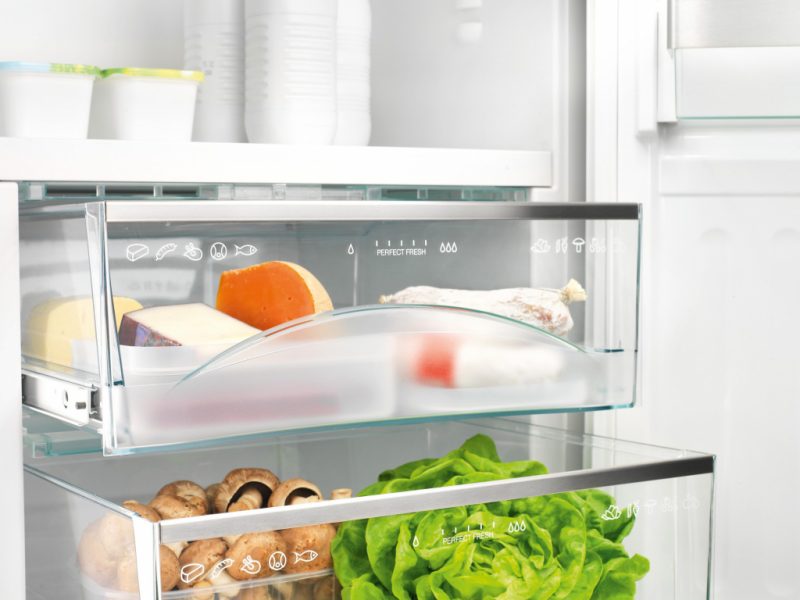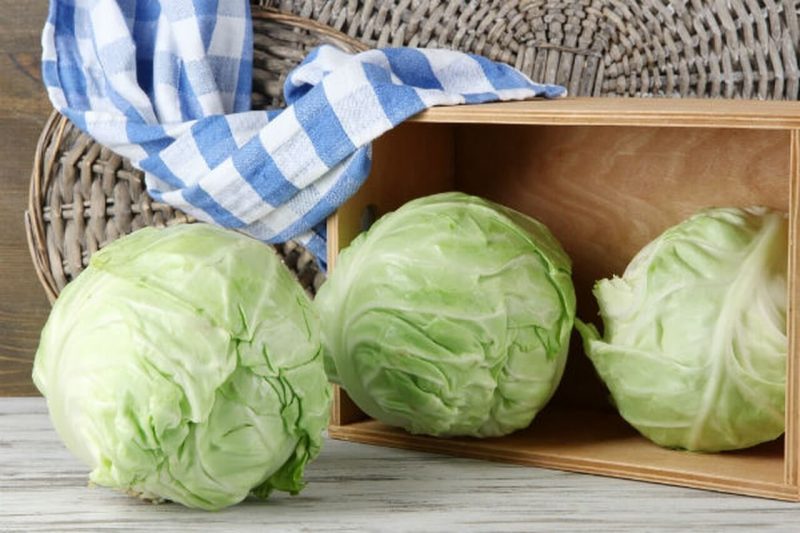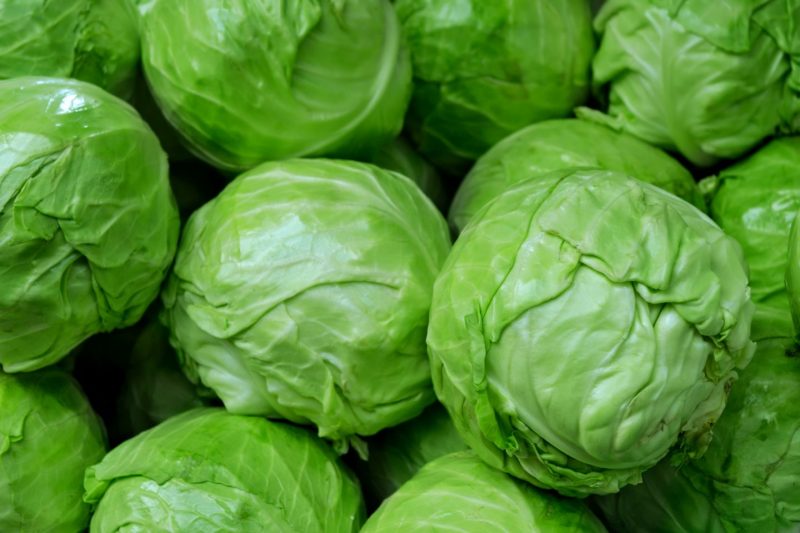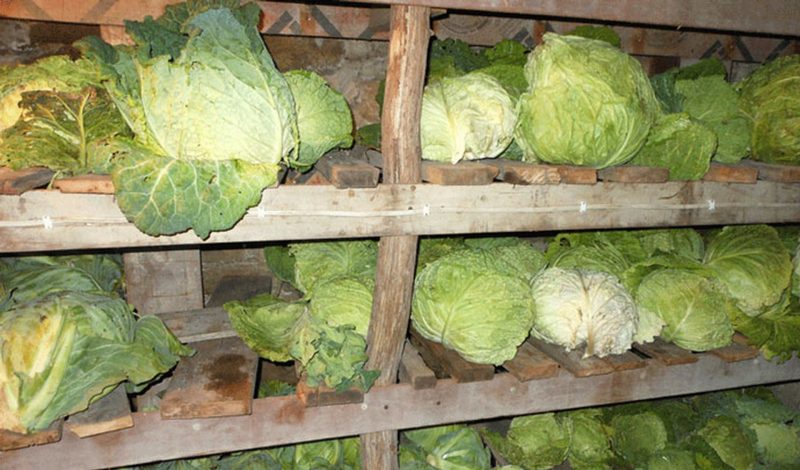Summer residents are often interested in how to store cabbage in the winter. This interest is quite justified, because this vegetable helps out well in the cold season, when it can be used to prepare many tasty and healthy dishes.
Material Content:
Varieties of cabbage for long-term storage
For short-term storage, lasting no more than 2 weeks, the variety does not matter. But the choice of cabbage heads for long-term storage for the winter should be approached more carefully. Heads of late-ripening varieties should be dense, without the slightest sign of lethargy, without cracks and damage, with stumps and integumentary leaves.

Late white cabbage is harvested only before the first frost in dry sunny weather. Harvest must be done carefully, preventing the head of cabbage from falling.
If there are insect traces on the head and their eggs, it is not suitable for long-term storage. It is better to choose large, large heads of cabbage, small ones are stored much worse.
How to store cabbage in the refrigerator
For storage in the refrigerator, you need to prepare the crop in advance. Heads of cabbage are removed from the garden, cut off the leg and remove one layer of coarse upper leaves. It is not worth it to completely remove the integumentary leaves, because it is thanks to them that the vegetable remains fresh for a long time. Prepared heads are washed under running cold water to get rid of the ground and small insects stuck between the leaves, and wiped with a towel.

In the vegetable compartment, cabbage can be stored for a long time, having previously wrapped it in a film, parchment paper or newspaper. These materials protect vegetables from premature drying and wilting.
In the same way, you can store Beijing or cauliflower and kohlrabi, only it is better to wash them immediately before use. True, their shelf life is very short.Broccoli are laid out in separate packets, but do not close them. At the bottom of the compartment for vegetables spread a damp rag and spread the vegetable on it. This type of cabbage loves high humidity and can only be stored like that.
But still, all types of cabbage, except white cabbage, are best frozen.
On the balcony at home
In urban conditions, cabbage can be stored in the winter on the balcony. The main thing is that it be glazed and insulated, so that there is no subzero temperature, otherwise the crop will freeze and be spoiled. Prepared heads are wrapped in paper or cling film and stacked in suitable crates or bags. Once every 4 to 5 weeks, it is advisable to check stocks for rot.

Subject to all conditions, the crop will lie on the balcony until warm.
However, when using food wrap, it is necessary to periodically check whether condensation appears between it and the head of cabbage. If water droplets are found inside, discard the old film, wipe the forks with a towel and wrap it in a new one.
How to dry cabbage for the winter
Dried cabbage does not lose its properties and can be stored for almost a year. Dried vegetables will be much more useful than fresh forks, which for a long time lie in the vegetable store, losing their useful properties every month. In addition, dried foods take up a minimum of space, which is especially true in apartments. Almost all types of cabbage are perfectly dried both in dryers and in the oven.

In the oven, the crushed vegetable mass is dried on baking sheets covered with parchment paper or silicone mats. Optimum temperature is 50 - 75 ° C.
If there is no convention mode in the oven, the door needs to be slightly opened to allow excess moisture to come out. Finished vegetables dry out and change color.
Such blanks are added to the first, second courses and even to baking. It should be borne in mind that the calorie content of dried cabbage is several times more fresh. It is best to store such blanks in jars or small bags made of natural fabric.
Storage of sauerkraut at home
Cabbage can be stored not only fresh, but also sauerkraut, since with this method of processing it does not lose its beneficial substances. Fermentation is the best option for using loose, damaged and rotten heads that will not be stored all winter.

In wooden barrels, preforms can be stored for 8 months, provided that the temperature does not fall below -1 ° C and rise above + 4 ° C. In glass jars and enameled containers, pickled vegetable mass is stored much less. The best place to store such blanks is a refrigerator, a balcony or a cold cellar.
If the shelf life of the snack is near the end, but there is no way to immediately use it for its intended purpose, you can simply freeze it. After defrosting, cabbage should be eaten immediately.
How to keep in a cellar or basement until spring
Optimal storage conditions in the cellar - temperature within 0 - 3 ° C and humidity around 85 - 90%.

There are many ways to store the crop:
- Suspension. During the collection of vegetables, do not remove the roots, trunk and integumentary leaves. A hook is attached to the lower part of the trunk and the heads of cabbage are hung on a wire. Sometimes the heads are collected in bunches and suspended several times at a time from the ceiling. Thus, moisture gradually passes from the roots to the leaves, and the cabbage is well preserved.
- Paper wrapping. Stumps are cut right next to the head. The heads are wrapped in several layers of paper and laid out on shelves, while maintaining a sufficient distance between them. True, sometimes due to high humidity, the integumentary leaves begin to rot, and the paper sticks to them.
- Use of cling film. A more practical way than paper wrap. The film creates a moisture-proof barrier and protects the crop from drying out. Before wrapping vegetables, dry and loose-fitting leaves are removed.The cabbage must be wrapped correctly, very tightly, pressing each unevenness in several layers. Wrapped heads are stored on basement shelves, in bags or drawers. But still periodically inspect the crop, in time to detect rot. The rotten place is completely cut out, and the head is urgently eaten
- Clay talker. The stumps are removed, and the heads of cabbage are coated with a clay solution and allowed to dry.
- The use of sand. In a box or directly on the cellar floor, pour a layer of sand 20 cm thick and stick assembled heads of cabbage with uncut stumps into it.
Save cabbage until spring is more than realistic. For a novice gardener, it is better to try several storage methods at once to determine which one is more suitable. Then this method can be used for years.












